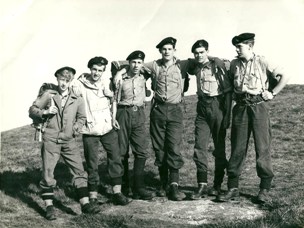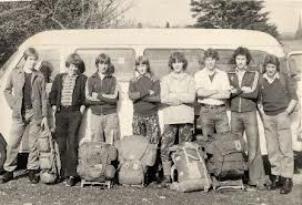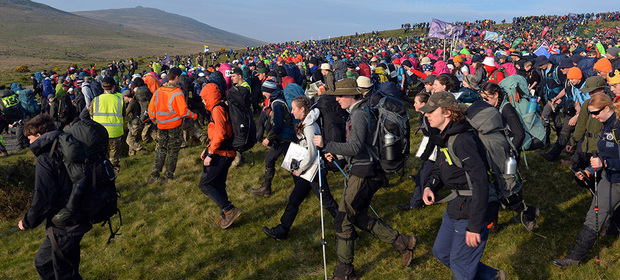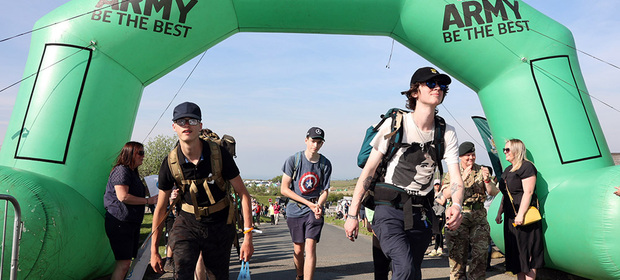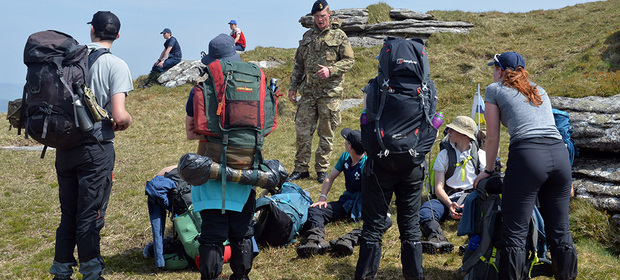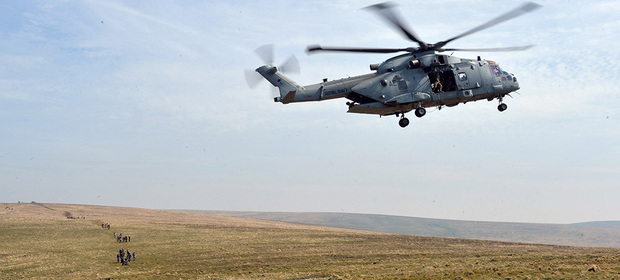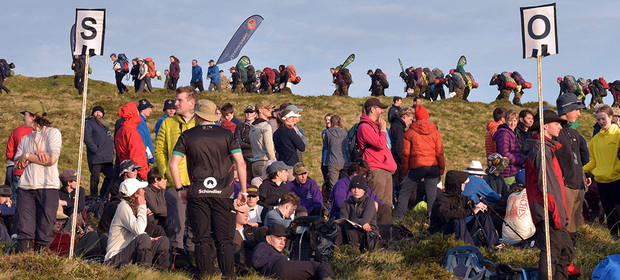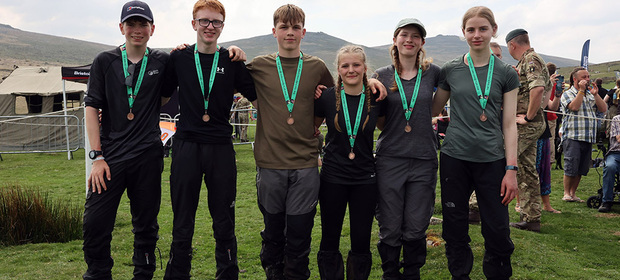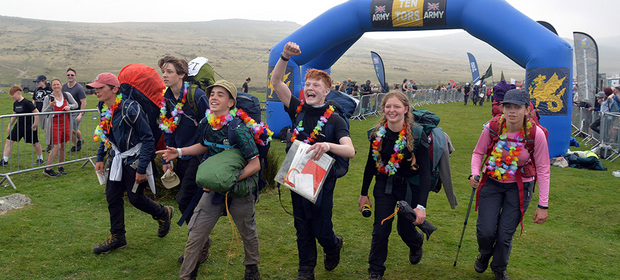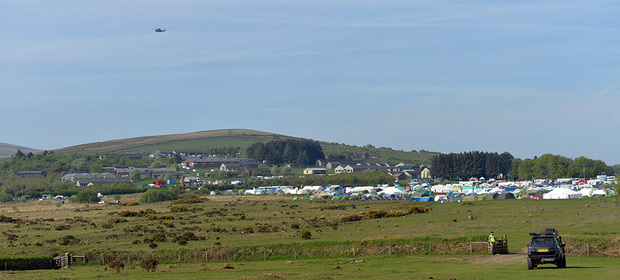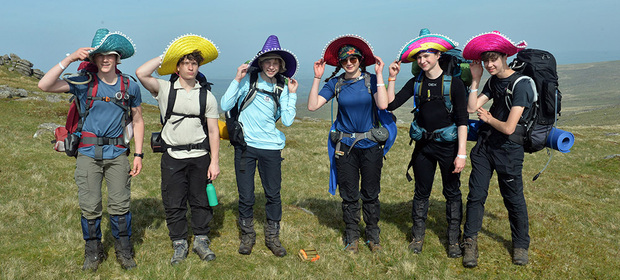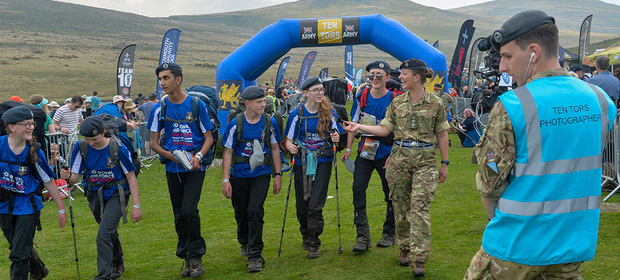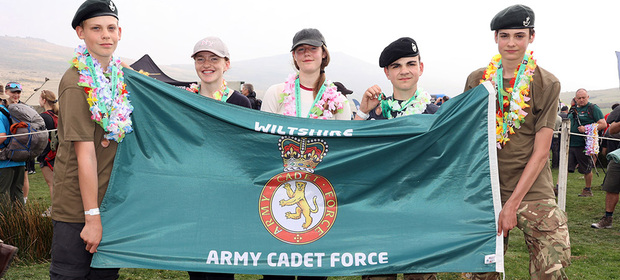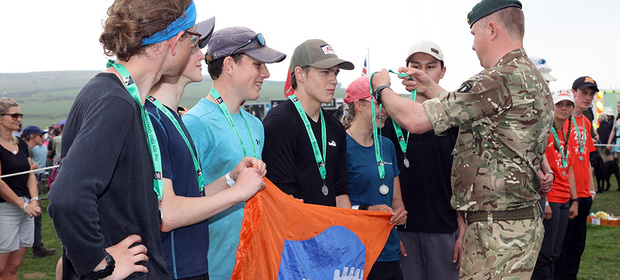The History
You can read a first hand account from Colonel Gregory and Captain John Joyner, recognised as the founder and architects of the Ten Tors.
1959 - 1970
Prior to the 1950s opportunities to participate in adventurous outdoor activities were extremely limited in Britain. In September 1959 three British Army officers from the Junior Leaders Regiment, Royal Corps of Signals (based at Denbury Camp near Newton Abbot) were monitoring an adventure training exercise for their young trainees on Dartmoor. Returning at night to their own campsite near Sittaford Tor, Colonel Gregory, Major Parker and Captain Joyner commented on the trainees’ enthusiasm as they tackled the challenges of navigating, bivouacking, and field cooking in wild country. Why should such activities, they asked, be confined to Junior Leaders? Why not also to less privileged young civilians?
Two more Army exercises followed, and in September 1960 a ‘Ten Tors Expedition’ for youths 16 to 18 attracted twenty ‘patrols’ of ten servicemen each and one ‘patrol’ of three civilians from Exmouth. The ‘entrants’ assembled at Denbury Camp and were bussed next day to Haytor. There, following the Start ceremony, they were handed a list of ten checkpoints, which could be visited in any order. The ‘best choice of route’ was calculated to be ‘about 55 miles’, and the Finish was back at Denbury Camp.
The ‘Expedition’ was repeated in May 1961, a time of year more suited to schools’ participation. Youths 16-18 were given routes of 50 miles, and there were 36-mile routes for boys 14-16 and for girls 14-20. ‘Patrol’ size was reduced to six persons, and girls slept overnight at a prepared camp. The finish was at Hexworthy. A total of 156 ‘patrols’ started and 83 completed intact.
In 1962 a 60-mile route was introduced for young men 18-20, and the 36-mile routes were cut to 35: the Finish was moved to Willsworthy. In 1965 the entry exceeded 2,000, and for the first time ‘patrols’ were made to visit checkpoints in a prescribed order. The pattern for future events was now fully established.
With the closure of Denbury Camp, the Start moved in 1968 to Okehampton: one year later the Finish also moved there. Because ‘patrols’ were now traversing high exposed moorland just as they were tiring and dusk was approaching, the 60-mile routes were reduced to 55 and the 50-mile routes to 45.
1970's onwards
From the early 1970s the organisers were under increasing pressure to allow girls to participate on terms more equal to the boys. Fixed overnight campsites disappeared, and in 1975 Sussex Police Cadets became the first girls ‘team’ (no longer ‘patrols’) to complete a 45-mile route: two years later they were first also to complete 55 miles. By 1984 mixed teams (3 male, 3 female) were permitted, and by 1988 teams of any gender combination were allowed for all ages and over all distances.
In Silver Jubilee Year, 1977, a one-day Special Event was introduced for young people with physical and learning difficulties. In 1996 this was re-named the ‘Jubilee Challenge’, and in 2009 all reference to ‘Expedition’ disappeared as the original event became the ‘Ten Tors Challenge’.
2010 witnessed the 50th Ten Tors in its 50th anniversary year (foot and mouth disease had caused a cancellation in 2001). A visit by the event’s Patron, HRH The Duke of Edinburgh, on the Sunday added to the significance of the weekend with some finishers receiving a royal welcome. Coincidentally a Ten Tors Award was introduced to recognise the work of many dedicated volunteers who annually train the participants for this fine event.
Safety and training
Safety and environmental protection have always been priorities on Ten Tors. 1974 saw the introduction of a compulsory kit specification, and in 1977 Kit Scrutineering joined Team Briefing as pre-event requirements. In 1978 an official entry limit was set at 2,400, and this still stands. 1982 saw the first Managers’ Training Weekend, which new managers had to attend. During Ten Tors 2007 two thousand participants were rescued from the moor because of torrential rain and fast flowing rivers. Consequently in 2008 the Managers’ Weekend was replaced by a mandatory annual Briefing to be attended by all team managers.
The weather
From the outset in 1960 to 1966 Ten Tors enjoyed very fine weather, and there have been many similar years since. 1982, 1999 and 2011 were outstanding years: 1988 and 1998 were too hot. In 1967 dense mist settled on the moor all weekend, and the start (which was then at Haytor) was delayed by half an hour: participants were even advised to use their discretion in deciding whether to set out! Icy rain combined with the dense mist made it an endurance test of the highest order, and over one hundred participants were still on the moor on Monday morning. The weather, because it showed no improvement all weekend, ensured that Ten Tors 1967 is regarded still as the worst to date. Ten Tors 1968 suffered also from heavy rain and high winds, but for that the Royal Army Medical Corps provided a 50 strong rescue organisation. Later that year the Dartmoor Rescue Group was formed, and since 1970 it has contributed invaluable safety cover during training and at Ten Tors itself.
In 1973 torrential rain and dense fog on Saturday made the crossing of the Rivers Tavy and East Dart very difficult: a safety review followed. For Ten Tors 1974 the compulsory kit specification was more detailed, and such kit could be checked before and during the event. Moreover, teams on 35 mile routes had to camp overnight at a manned tor, and a system of Crash Times was introduced so that any team clearly too late to finish by 5pm on Sunday could be stopped at pre-determined checkpoints. For 1976 mobile scrutineering teams were introduced to ensure that participants were complying with the Rules, particularly with regard to the kit requirement. In 1977 teams for the first time were required to have all their kit checked by the Scrutineers in Okehampton Camp on the day before the event.
In 1981 gales, torrential rain, hail and thunder provided an excellent opportunity for critics of Ten Tors to challenge the safety of the event. This was especially so as Ten Tors took place only three weeks after an Easter Weekend during which an Air Training Corps team (not preparing for Ten Tors) had been stranded on the moor for two days following a sudden and dramatic blizzard, and two weeks after gales and heavy rain led to over 100 wet and exhausted youngsters being treated at a centre in Okehampton. Consequently Ten Tors 1982 saw the introduction of a Managers’ Training Weekend, which from the following year became compulsory for new managers and today is an annual commitment for all managers.
During Ten Tors 1996 a cold northerly wind throughout Saturday gave way to heavy rain and snow overnight, and blanket fog with driving rain and snow persisted throughout Sunday. The computerized information system had failed from the outset, two checkpoint tents were demolished by wind, and in the early afternoon of Sunday the decision was taken to abandon the event following requests from Tor Party Commanders to do so. A mass evacuation from the moor was organised and the RN helicopters played a crucial role, particularly on Kitty Tor, in some unspeakable conditions even for them. Despite all this, 51 teams completed their routes, but sadly no record of these successes was available afterwards!
In 2007 the event was again abandoned on account of the weather, this time on Saturday evening, at the end of day one of the event. Dartmoor had seen heavy rain during the previous week, and Saturday added another torrential downpour. By the afternoon streams and rivers across the moor, fed by the soaked ground, were full and flowing fast. The routes of many teams would lead them to stretches of water impassable except by wide detour, or across ground that was turning into mire. Worse was threatened for the following day. For the first time in the history of the event not one of the teams that had started would finish. Throughout Sunday teams were evacuated in a controlled manner from the moor: all participants were consequently awarded their medals.
